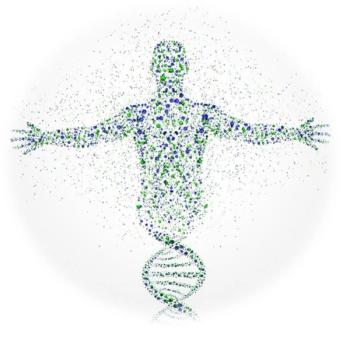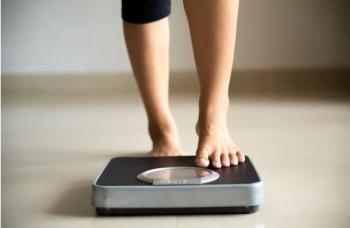
Using metabolomic profiling from more than 11 000 individuals, researchers identified common pathways linking seemingly unrelated diseases that often co-occur.

Study: Black Women with PCOS Have Greater Cardiometabolic Risk vs White Women

Using metabolomic profiling from more than 11 000 individuals, researchers identified common pathways linking seemingly unrelated diseases that often co-occur.

Results from a head-to-head study show the investigational medication, tirzepatide, led to superior A1c and body weight reductions compared to semaglutide.

More than half of adults with obesity who received once-weekly semaglutide lost 15% of body weight, according to the recently published STEP 1 study.

A new review of >60 000 patients with diabetes found CGM use during the early weeks of the COVID-19 pandemic improved their time in range.

New research suggests obesity is responsible for 30%-53% of new type 2 diabetes cases in the US annually.

Director of the Brigham and Women's Diabetes Program Marie McDonnell, MD, talked with our editor about 2020 studies on SGLT-2 inhibitors, insulin icodec, and more.

Compared to medication and lifestyle changes, metabolic surgery is more effective in the long-term control of severe T2D, a new study found.

Sotagliflozin reduced CV death and hospitalization for HF in patients with T2D and acute symptomatic HF when given during or immediately after hospitalization.

Patients with chronic kidney disease have had no treatment options to slow the certain progression to renal failure. Enter SGLT2 inhibitors. A key clinical trial investigator explains.

Primary care clinicians should be the first to prescribe SGLT2 inhibitors for many reasons, as explained by Prof Jonathan McMurray in this Patient Care interview.

DAPA-CKD investigator Professor John McMurray details the trial and renal and cardiovascular outcomes for Patient Care Online.

Director of the Brigham Diabetes Program at the Brigham and Women's Hospital discusses the latest in diabetes management.

A new study of Japanese adults with type 2 diabetes found dual consumption of green tea and coffee reduced mortality risk by >60%.

Obesity, a complex chronic disease in itself, underlies many of the fatal cardiac and cardiometabolic diseases of the 21st century. Find a wide collection of expert guidance in this collection.

Adults with diabetes admitted to a New York City hospital with COVID-19 had a lower mortality risk if they received a statin, a new study found.

Preventive Cardiology Collection Table of Contents: Expert video interviews, short, clinical guideline-focused quizzes, facts at-a-glance slideshows, plus news.

Refresh your memory on findings from the EMPA-REG OUTCOME, CANVAS, CREDENCE, and DECLARE-TIMI cardiovascular outcomes trials on SGLT2 inhibitors.

In patients with obesity and type 2 diabetes, metabolic improvements were similar after weight loss induced by surgery or a low-calorie diet.

Roux-en-Y gastric bypass remains the gold standard of bariatric surgery. Obesity and nutrition expert Caroline Apovian, MD, explains why and how it differs from the 3 other types of weight loss surgery.

Physicians’ CKD awareness in T2D is linked with CKD severity, suggests a new study presented this week at the American Diabetes Association’s 80th Virtual Scientific Sessions.

Diabetes, obesity, hyperlipidemia, hypothyroidism-these endocrine disorders and others are major reasons why patients come to you. Find out what you know, and don’t know, here.

This asymptomatic, hyperpigmented lesion was first noted 5 years earlier on the left upper back of a 16-year-old boy. A nevus? Cafe au lait spot?

Acromegaly was diagnosed in a 36-year-old woman who presented with loss of vision in the right eye that had initially involved the peripheral field. Which statement about acromegaly is NOT true?

Thyroglossal duct cyst; HCV-HIV coinfection; slurred speech and trouble swallowing and chewing . . . see how well you do on the quiz questions this week.

A 62-year-old man had multiple, randomly distributed, flesh-colored nodules on his trunk, arms, and face. The lesions measured 0.5 to 1.0 cm and appeared slightly pedunculated. Tissue biopsy showed Schwann cells. Your diagnosis?